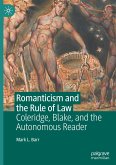This book offers a study of the different strategies used by Edgar Allan Poe to reflect the 19th century United States' rife phenomenon. The purpose of this study is to show how Poe's use of taphephobia reflects his society and era, showing an image of an obsessive United States controlled by the fear that reshapes the lifestyle of a whole nation. It also presents a reflection of the collapse of the religious dogma and faith and the rise of the belief in scientific approach. Hence, taphephobia is not studied as a psychological phenomenon but rather as a historical event. This book offers a complete image of taphephobia through the literary analysis of Poe's tales. It clarifies the reasons behind the phenomenon through a parallel study of the characters' agony and the United States' public horror that leads to a number of precautions adapted by the whole society. The conclusion reached is that Poe uses literary representation of taphephobia to show how the obsession becomes the driving force behind the rise of whole industry and how the private events of death and burial become a national affair that necessitates the power of the law.








